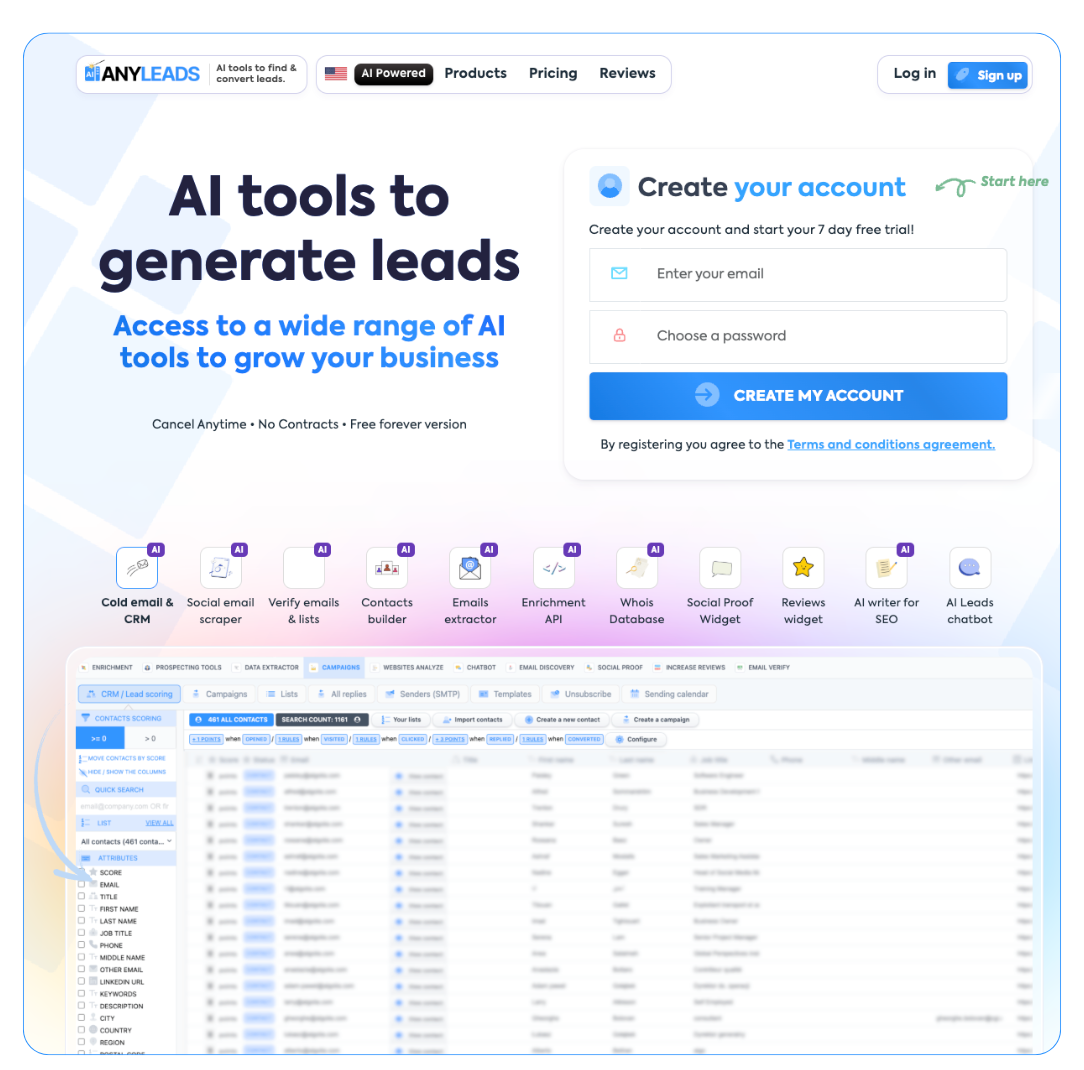 LIMITED SPOTS
All plans are 30% OFF for the first month! with the code WELCOME303
LIMITED SPOTS
All plans are 30% OFF for the first month! with the code WELCOME303

 LIMITED SPOTS
All plans are 30% OFF for the first month! with the code WELCOME303
LIMITED SPOTS
All plans are 30% OFF for the first month! with the code WELCOME303


An agency scales from 20 to 60 clients in six months. The client dashboards that loaded in 2 seconds now take 30+ seconds during check-ins. Month-end reports timeout halfway through processing. The shared hosting plan that worked fine for 20 clients can't handle 60 simultaneous database queries. This pattern repeats across agencies managing multi-tenant lead tools and multiple client dashboards.
The infrastructure choice determines whether client dashboards stay responsive or crash during peak usage. Bacloud Proxmox dedicated servers solve this through virtualization that isolates each client's environment while sharing physical hardware efficiently.
Agencies use dozens of different tools to manage client data. Two types are particularly critical for running operations at scale.
Multi-tenant lead management tools handle prospect tracking and customer data. Platforms like HubSpot, Salesforce, or custom CRMs store contact information, score leads, trigger email sequences, and track deals through sales pipelines. The "multi-tenant" structure means one installation serves 50+ clients with separate databases. When an agency updates a lead scoring formula, it applies to all clients instantly. Client A's prospects stay completely isolated from Client B's data.
Client dashboards solve a different problem. These tools pull performance metrics from
Google Analytics
Facebook Ads
Email platforms
Lead management system
Dashboards turn raw numbers into visual reports to show traffic growth, conversion rates, and ROI. Clients log in to see real-time results without requesting custom reports each month.
Agencies use both systems together because:
Lead tools manage the data, and dashboards display it visually
One $500/month subscription serves 100 clients instead of 100 separate licenses
Template updates apply across all accounts, no manual work per client
Reporting time drops from 10 hours per client to minutes
Traditional shared hosting runs all client dashboards in the same server environment without isolation. When 50+ clients access dashboards simultaneously, resource boundaries don't exist.
In such cases, agencies face these problems:
Resource theft between clients - Client A's heavy report consumes 80% of the server CPU. Clients B through Z experience slowdowns.
Security vulnerabilities - One compromised dashboard exposes the entire server. Malware spreads laterally with no isolation between client environments.
Backup disasters - Backing up 50 databases takes a very long time. Restoring one client requires taking all 49 others offline.
No independent scaling - Client B needs 3x more resources. Only option: upgrade the entire server for all clients.


Proxmox runs multiple isolated virtual environments on a single dedicated server. Instead of buying 10 physical servers for 10 clients, one server hosts 10 separate virtual machines. Each client tier runs in its own VM with dedicated resources.
Proxmox offers two virtualization types. Kernel-based Virtual Machine is the industry-leading Linux virtualization technology for full virtualization. KVM is a kernel module merged into the mainline Linux kernel. It runs with near-native performance on Intel VT-x and AMD-V hardware. Each VM gets private hardware with its own resources. Agencies can run both Windows and Linux client dashboards in separate VMs with complete isolation.
Linux Containers or LXC, provides container-based virtualization as a lightweight alternative. LXC is an operating-system-level virtualization environment that runs multiple isolated Linux systems on a single control host. Unlike KVM, LXC shares the host system's kernel instead of virtualizing full hardware. This reduces resource overhead. Agencies use LXC for smaller clients or development environments.
Whether using KVM or LXC, each client's dashboard and lead management tools operate in separate virtual environments with no cross-access.
Proxmox's built-in firewall provides customizable protection via GUI or CLI. The distributed, iptables-based firewall runs on each cluster node and provides full isolation between virtual machines.
Security features for multi-client environments:
Role-based permission management controls granular access to VMs, storage, and nodes
Access control lists define user groups and privileges on specific paths
Authentication supports Linux PAM, LDAP, Microsoft Active Directory, and OpenID Connect
Firewall rules apply to all hosts or specific VMs only
Each client dashboard operates with independent security boundaries that prevent lateral movement between virtual environments.
The web-based management interface displays resource usage across all VMs from one dashboard. Agencies can monitor CPU, RAM, and storage consumption for each client's virtual environment in real-time. Live migration moves VMs between nodes without downtime to rebalance resources when needed. The flexible storage model lets administrators allocate different storage types and capacities based on each client tier's requirements.
Each VM gets dedicated CPU, RAM, and disk resources that other VMs cannot access. The hypervisor enforces these boundaries at the hardware level. This prevents resource theft where one client's heavy processing slows down other clients' dashboards.
Live migration moves running VMs between cluster nodes without downtime when load balancing becomes necessary. If one server reaches 80% CPU usage during month-end reporting, administrators redistribute VMs to underutilized nodes through the web interface.
Agencies assign faster NVMe or Ceph RBD storage to premium clients while standard clients use traditional storage. This dynamic resource management prevents performance bottlenecks during simultaneous peak usage across all clients.
The HA Manager monitors all VMs continuously and responds automatically when performance issues arise. Clustered nodes distribute client dashboards across multiple physical servers instead of cramming everything onto one machine.
Software-Defined Networking creates isolated network paths per client tier. Premium clients get dedicated VLANs that separate their traffic from other clients. One client's heavy API calls or large data transfers cannot consume the network bandwidth needed by other clients' dashboard access.
Multi-tenant agency tools process thousands of database queries and API calls per minute. The server hardware determines whether 50 client dashboards load in 2 seconds or crash during peak usage.
Required specifications for running Proxmox with multiple client VMs:
CPU - 16-32 cores minimum (AMD EPYC or Intel Xeon processors) to run 5-10 VMs simultaneously
RAM - 64GB-128GB ECC memory (each client dashboard VM needs 8-16GB, depending on client count)
Storage - NVMe SSDs for database I/O (client dashboard queries need sub-50ms response times)
Network - 1Gbps unmetered bandwidth (clients access dashboards 24/7 from multiple locations)


Bacloud Proxmox dedicated servers come pre-configured with Proxmox installed and ready to deploy VMs within hours. Agencies skip the manual setup process and start creating client environments immediately.
The bare metal tier offers the highest performance level. Bacloud Proxmox dedicated servers in the bare metal category deploy within 15 minutes during business hours with pre-configured RAID1 storage. All hardware is 100% yours with no CPU or IOPS limits.
Proxmox Virtual Environment is an open-source virtualization platform built on Debian Linux with no licensing fees. Bacloud Proxmox dedicated servers consolidate multiple client VMs onto a single physical server. This provides lower hardware costs while simplifying management.
Key advantages for agencies:
Run multiple client VMs on one server instead of buying separate hardware per client
Allocate CPU, memory, and storage to each VM based on client tier requirements
Scale by adding VMs as the client roster grows, without purchasing additional servers
Quick backup and restore through the integrated Proxmox Backup Server solution
Support containerization alongside VMs
Built-in security tools like firewalls and access control methods
Bacloud's 20 years of hosting experience delivers 99.97% uptime across 57,000+ delivered services. Over 35,000 customers trust Bacloud infrastructure for business-critical applications.
Bacloud Proxmox dedicated servers handle multi-tenant agency workloads with fixed monthly pricing instead of variable cloud bills. Agencies looking to eliminate dashboard crashes during peak usage can sign up and explore Bacloud Proxmox dedicated server configurations today.